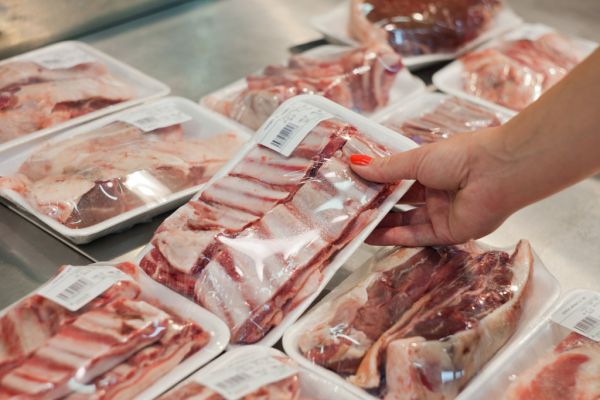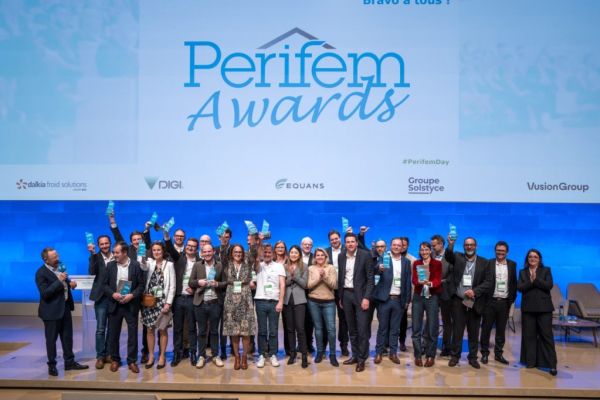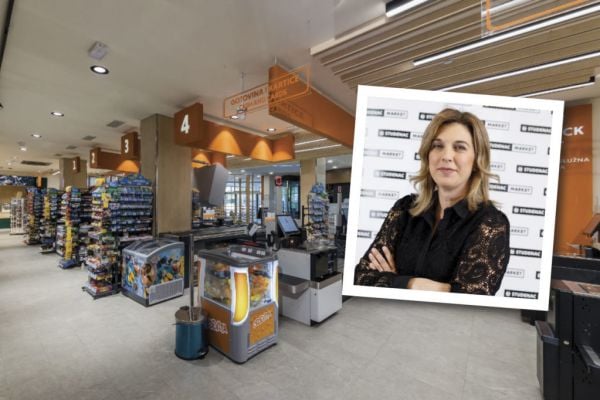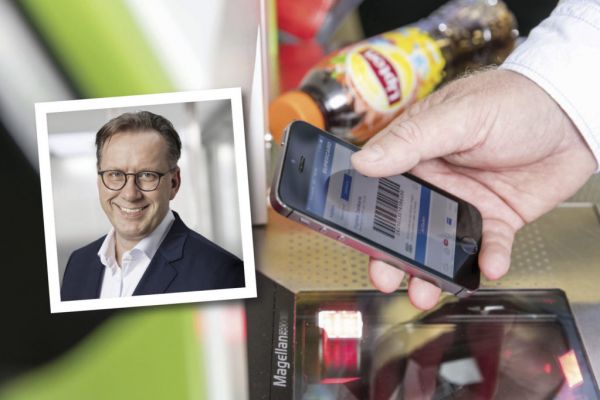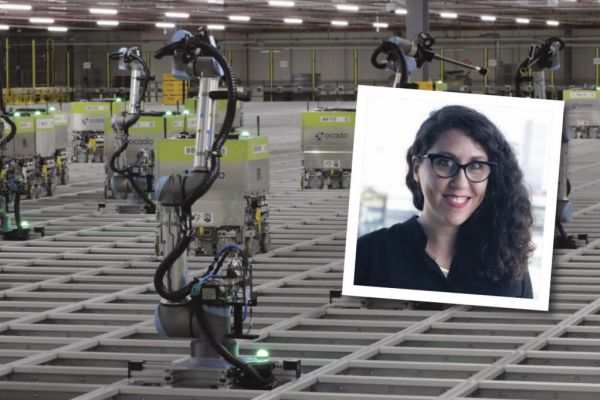'Christmas is coming and the goose is getting fat,' goes the old nursery rhyme, however, the same doesn't necessarily apply to the festive profits of meat retailers, as the zenith of the carnivore calendar approaches.
Christmas is the time for giving, but it is also a time for taking. According to the Centre for Retail Research, malicious losses – theft – could account for almost €1.4 billion in the UK this Christmas, a figure that will cost every UK household €56.
Although the majority of external theft will be targeted at easily concealable and wearable items, including fashion and beauty products, high-value consumables such as alcohol, cheese, salmon and meat will also dramatically eat into retailer’s takings.
Indeed, the stakes have never been higher when it comes to combatting meat theft in Europe’s supermarkets – a symptom, perhaps, of the fact that because the cost of steak is so high, it remains the third most consumable stolen item across the globe.*
Need Or Greed
Back in 2008, when the global slowdown created a deep recession that saw not only many businesses go to the wall, but entire European economies teetering on the edge of bankruptcy, a phrase was developed to capture, and almost justify, the growth of meat theft: ‘need rather than greed’. This was a response that painted a picture of economic victims or refugees eating their stolen ‘prey’, rather than fencing or selling it on for profit.
This was a media sound bite that softened the narrative around store theft and highlighted a widening gap between society’s haves and have-nots.
During the most recent recession, this Robin Hood ‘steal from the rich to feed the poor’ mentality resurfaced, as job losses and insecurity literally stole the food off the table of hard-working people, while the large institutions that were sometimes credited with causing the economic instability appeared to be made of Teflon.
This, combined with an atmosphere of necessary austerity across Europe – Ireland, Greece, Spain – manifested itself in benefit cuts and the rise of food banks, even in so-called affluent pockets of society.
This new economic landscape has, in recent years, caused a sense of outrage and offered meat thieves a twisted mandate to redress the balance, so much so that the problem seemed to return to the source, with a sharp increase in cattle- and sheep-rustling in parts of the UK and the US.
A Long History
Meat theft has always been an issue, long before supermarkets came into existence. In the eighteenth-century landed fiefdoms of Europe, poaching was a serious business, the penalty for which was hanging.
Today, the penalties are not only less punitive, but almost non-existent, with UK retailer Iceland having to go to extreme lengths to protect its lamb shanks, its most expensive item. In 2012, it started merchandising the product in safer boxes, the plastic containers originally introduced to protect perfumes in health and beauty stores. At the 2013 Retail Fraud conference in London, Iceland’s head of loss prevention, Ady Houghton, told delegates about how this strategy not only saw losses drop, but saw profits from legs of lamb soar.
“We had to make a choice – to find an effective solution to reduce losses, or take the product off the shelf entirely,” Houghton said. Lamb safer boxes brought a significant sales increase with negligible losses and, after store trials to test product performance in freezers, merchandising layouts, staff and customer feedback and shrinkage, Iceland gave the green light to a nationwide roll-out to more than 550 stores nationwide alongside a programme of staff training.
“We knew from the trials that this solution would work, but the results have really exceeded our expectations,” added Houghton. "The safer boxes have delivered significant profit growth from this product line at the same time as virtually eliminating losses, and the increase in lamb sales has also delivered stronger results in related lines as well,” he concluded.
Not everyone was happy. In the following debate, some shoppers at the store gave the approach a roasting, saying that it treated them little better than criminals because they felt tarnished by the association with theft.
Be Prepared
What else can retailers do to protect their meat stocks? The consumer and, to a lesser extent, police response to meat theft has fed into the broader narrative surrounding shoplifting and the subtext that: a) it is somehow a victimless crime, and b) that stores can somehow afford it.
Iceland has set out its stall, making a strong point against a political backdrop where police forces have been forced to reduce costs by an average of 20 per cent. In this austerity model, there is no room for shop theft on the police priority lists, where the risks of global terrorism, child-grooming, and drug- and people-trafficking are the obvious focus of their limited resources. Despite this, however, there is well-documented evidence that organised retail crime (ORC) is a key funder of all of those more serious offences.
This is why retailers have been beefing up their own security and introducing more subtle security trimmings, including electronic article surveillance (EAS) soft-tagging, applied as a source tag at the point of processing and packaging.
Unlike tags that are applied in store, taking up valuable staff time, source-tagging guarantees synchronicity between the different players in the supply chain – from the suppliers to the meat buyers and merchandisers and all touch points, through to the loss-prevention teams – to 'bring home the bacon' in terms of reduced shrinkage from farm to fork.
In recent years, EAS suppliers that have mastered their art around clothing and high-value merchandise have come up with solutions for applying tags to food that can not only adhere to the product packaging at chilled and frozen temperatures, but also prevent false alarms through reliable detection and deactivation.
Prior to the early noughties, the top cuts of meat – fillet steaks, rib-eye, free-range chicken and expensive packs of bacon and gammon – literally flew off the shelves, but not into the possession of legitimate customers. Indeed, before EAS, many food retailers complained of empty shelves by mid-day – there is a brisk black-market business in ‘stolen sirloins.’ Evidence of recent meat-tagging initiatives suggests that with EAS, however, the shrinkage of the tagged products was reduced between 50 per cent and 75 per cent, and because of the ‘halo effect’, the shrinkage of non-tagged meat products also went down considerably.
The recovering economies of Western Europe have meant that meat theft is no longer a sympathy-grabbing approach. Evidence from retailers suggests that while it is still a problem, it is nowhere near what it was pre-2010. Indeed, there is clear evidence that the stolen-meat types are targeted for their resale value, rather than to put food on the table of someone who needs to steal in order to eat.
Local Crime
A number of European retailers suggest that the landscape has now shifted from being a major national issue to intense pockets of local activity, largely in areas where there is a lower socio-economic demographic or in neighbourhoods with high levels of poverty and associated criminal activity. This, in turn, plays into the hands of retailers, who can map their risk hot spots and apply a risk-to-resource approach to technology. This means that although source-tagging is available to the entire estate, it comes into its own in neighbourhoods surrounding ‘hot stores’, where a disproportionate level of criminal meat-rustling for profit takes place.
One UK loss-prevention director for a major supermarket said, “If you speak to some of our store managers, it is a major issue, as they are in certain risk-demographic areas where there is a profitable black market in the sale of high-value meat. We tend to lose steaks and legs of lamb, which retail at around the £10 mark, and for the thieves, there is a quick turnaround in business in the pubs, if you are in the know of where to go.
“We have another issue with smoked salmon and cheese in certain stores, but again, it is the high value that drives this market, and how fast they can be fenced.
“We apply the tags in store on high-value products, such as steaks, because what is clear is that it is all about high-value cuts of meat. There is very little theft of white meat, such as turkey, because it is relatively inexpensive and they can’t get the return on it, and it is not worth getting caught, especially as they are very bulky to conceal,” he added.
This view was shared with another supermarket head of loss prevention (LP), who said, “We do still have issues, although this is less so since we commenced source-tagging our meat. This has reduced our losses in conjunction with our other solutions, particularly in relation to chilled meats.”
Source-Tagging
Apart from such instances, source-tagging is viewed by many as a more cost-effective solution because applying tags at the point of process reduces staff downtime in the store and means that they can be visibly on the shop floor offering customer service, rather than in the stockroom applying tags, often inexpertly. Many stores have calculated the seconds, minutes and hours taken to apply tags and arrive at the conclusion that it is time not well spent during a busy festive period.
It is no longer simply about reducing theft, but more about availability, as more European retailers move towards total-loss strategies that are built around stock integrity and transparency. In other words, the meat is not only not stolen, but, more importantly, is available for sale. Conversely, when a piece of meat is stolen, it is not only the loss of profit from that, but the requirement of that store to sell up to four other cuts to make up for the loss caused by the theft.
So this Christmas may see less need and more greed, less give and more take when it comes to the theft of high-end meat products. However, in this period of economic recovery, there is certainly less sympathy for ‘sirloin purloiners’, and in a climate of joints literally not flying out the door, food retailers and their LP partners have the opportunity to master their anti-meat-lifting strategies from a cost-and-effectiveness perspective. [Source: *Global Retail Theft Barometer.]
© 2015 European Supermarket Magazine – your source for the latest retail news. To subscribe to ESM: The European Supermarket Magazine, click here.
